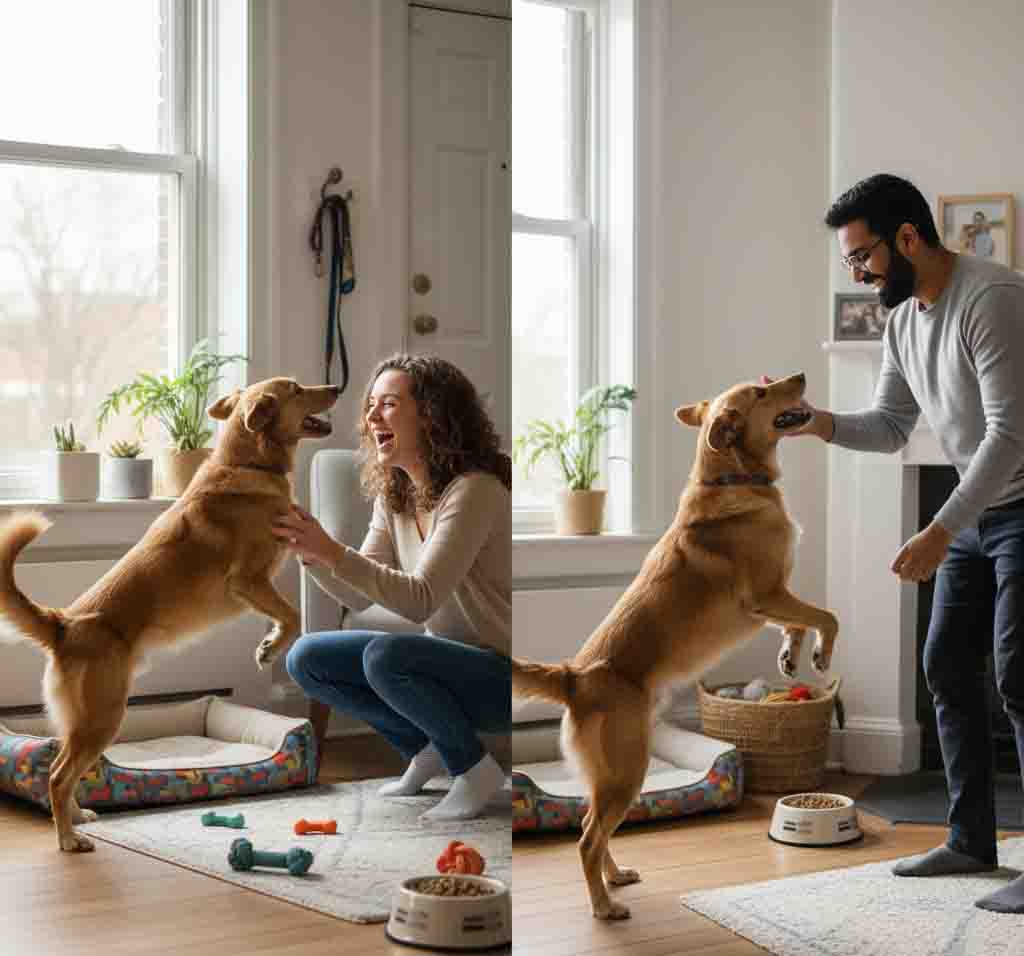When Your Pet Has Two Homes
When Sarah and Mark ended their five-year relationship, the hardest conversation wasn’t about who got the apartment—it was about who would keep their rescue dog, Luna. If you’re facing similar decisions, you’re not alone. Millions of people navigate pet co-parenting each year, and with the right approach, it can work better than you might expect.
Successful pet co-parenting requires setting aside hurt feelings to focus on what’s best for your animal companion. It’s not about recreating the past but building a new, functional relationship centered around your pet’s needs.
Q: Is pet co-parenting actually better for animals than choosing one permanent home?
A: For most pets, consistency matters more than household structure. If you can maintain stable routines, veterinary care, and familiar relationships across two homes, co-parenting often causes less stress than complete separation from one caregiver.**
Creating a Workable Pet Co-Parenting Plan
Start With a Trial Period
Begin with a 2-4 week trial arrangement before committing to long-term plans. This allows you to identify practical challenges while keeping options open. Many couples discover that weekly exchanges work better than monthly, or that their cat adapts better to one primary home with visitations.
Establish Clear Financial Agreements
Document how you’ll share costs for food, veterinary care, grooming, and pet insurance. Consider opening a joint account specifically for pet expenses or using apps like Splitwise to track shared costs. The most successful arrangements account for both partners’ financial situations without creating resentment.
Create Consistency Across Households
Use the same food brand, maintain similar routines, and share information about vet visits or behavioral changes. A shared Google Doc or pet parenting app can help track feeding schedules, medication, and important updates.
Plan for Transitions
Develop a neutral exchange routine that minimizes stress for everyone. Some pet parents meet at a local park, while others do quick doorstep handoffs. Observe your pet’s behavior during transitions and adjust accordingly.
Q: What if my ex and I can’t communicate without arguing?
A: Use technology to minimize direct contact. Apps like OurPetChild or 2Houses allow you to share updates and coordinate schedules without lengthy conversations. Stick to pet-related topics and use business-like communication.**

Recognizing and Managing Pet Stress
Animals sense emotional tension and routine changes. Watch for signs of stress like changes in appetite, excessive grooming, unusual vocalization, or bathroom accidents. If you notice these behaviors:
-
Maintain consistent routines between households
-
Consider using calming products like pheromone diffusers
-
Consult your veterinarian about anti-anxiety options
-
Ensure your pet has familiar items in both homes
Keep transitions calm and positive. Your emotional state during handoffs directly affects your pet. If you’re anxious or upset, they’ll sense it and become stressed themselves.
Q: How long does it take pets to adjust to two-home living?
A: Most pets adapt within 2-8 weeks, though older animals or those with anxiety issues may need longer. Consistency is key—the more predictable the schedule and routines, the faster they’ll adjust.**
When Co-Parenting Isn’t Working
Despite best efforts, sometimes shared pet custody creates more stress than stability. Consider these signs that your current arrangement might need revision:
-
Your pet shows ongoing stress symptoms despite adjustment periods
-
Exchanges consistently involve conflict or tension
-
The schedule creates significant disruption to your pet’s routine
-
One party becomes increasingly unreliable with care or finances
Alternative solutions might include one primary home with visitation rights, seasonal arrangements, or in some cases, agreeing that one home better serves your pet’s long-term needs.
Remember that reevaluating your arrangement doesn’t mean failure—it means prioritizing your pet’s wellbeing above rigid agreements.
Building a Sustainable Future
The most successful pet co-parenting arrangements evolve as circumstances change. What works immediately after a breakup might need adjustment when someone moves, starts a new job, or enters a new relationship.
Schedule quarterly “check-ins” to discuss what’s working and what isn’t. Keep these conversations focused on your pet’s needs rather than personal grievances. As time passes, many former couples find that their shared love for their animal creates a foundation for a healthy, platonic connection.
Your pet doesn’t understand breakup drama—they just know they have two people who love them. By keeping their wellbeing at the center of your decisions, you’re giving them the stability they need to thrive in their new normal.
Q: What if one of us starts a new relationship?
A: Introduce new partners gradually and ensure they understand the co-parenting arrangement. Maintain boundaries to protect the primary pet-parent relationship, but be open to additional sources of love and care for your animal.



